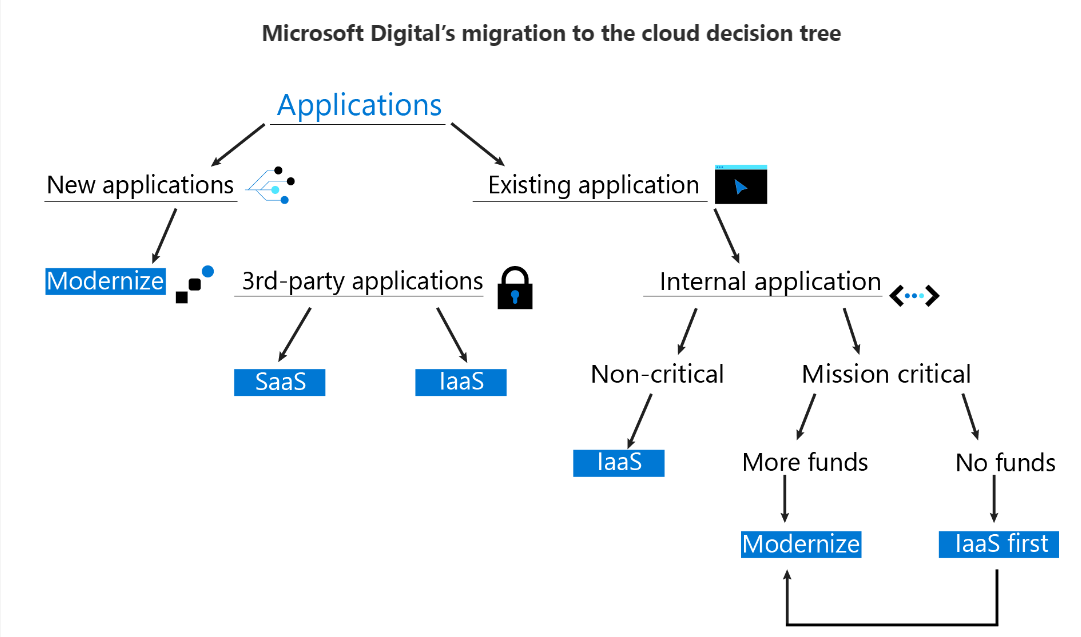Introduction to Microsoft's Azure OpenAI Service
In a rapidly evolving digital landscape, cloud migration is proving to be an increasingly attractive option for IT leaders. With cloud solutions offering greater scalability and reliability than traditional on-premise systems, it’s no surprise that many organizations are making the switch.
In this blog post, we will discuss three key benefits of cloud migration that make it such an attractive proposition for IT leaders: cost savings, improved security and enhanced agility. We will also provide insight into how cloud technology can help businesses become more competitive in today’s market and how Microsoft went through its own unique cloud migration journey.
By the end of this blog post, you should have a better understanding of why cloud migration is so appealing to IT professionals and the advantages it provides to their organizations.
In this blog you will find:
📊 Statistics from IT Decision Makers
☁️ 4 Key Benefits of Cloud Migration for IT Leaders
💰 Cost Savings
🛡️ Improved Security
🏃🏽♂️ Enhanced Agility
👍 Staying Competitive in the Market
☁️ Microsoft’s Cloud Migration Story
😊 Conclusion
-
📊 Statistics from IT Decision Makers
The key statistics below were obtained from a cloud computing survey in 2022 by Foundry which was completed by 850 IT decision-makers (ITDMs) who were engaged in the cloud computing purchase process for their respective organizations. In addition, the organizations that these survey participants worked for will (or intend to have) “at least one application or a portion of their infrastructure in the cloud”.
- ☁️ 72% of ITDMs said that their organization is defaulting to cloud-based services when upgrading or purchasing new technical capabilities
-
- 👎 96% of ITDMs have experienced significant challenges in implementing their cloud strategy
- 📈 In total, the organizations plan to spend $78 million on cloud computing over the next 12 months, which is up from $73M in 2020. This shows how organizational budgets for the cloud continue to increase due to its relevance to their strategic success.
-
For IT leaders and organizations looking to leverage cloud computing, business continuity and disaster recovery are at the top of the list of key drivers for cloud adoption. However, managing data privacy concerns due to a lack of control over cloud infrastructure can be a major challenge during cloud implementation. For those willing to take on these challenges, cloud computing can prove to be a valuable resource when organizing and protecting digital assets.
-
Related Blogs
All you need to know about Azure Cloud Migration: Best Practices
☁️ 4 Key Benefits of Cloud Migration for IT Leaders
💰 IT Cost Savings:
One of the biggest advantages cloud solutions provide is cost savings – cloud technology allows businesses to scale up or down depending on their needs. This means that businesses no longer have to invest in expensive hardware and software, allowing them to focus their resources elsewhere. Additionally, cloud solutions can be implemented quickly and seamlessly, reducing the amount of time IT professionals need to spend setting up and managing systems.
🛡️ Improved Security:
Another major advantage cloud migration provides is improved security. Cloud solutions are hosted on secure, cloud-based servers that are monitored and protected by experts around the clock to help protect against cyber threats. With cloud-based systems, IT professionals no longer need to worry about purchasing or managing expensive antivirus software, making cloud migration an attractive proposition for businesses of all sizes.
🏃🏽♂️ Enhanced Agility:
Cloud solutions also offer enhanced agility, allowing businesses to quickly and easily scale up or down depending on their needs. This makes cloud migration particularly attractive for organizations that need the flexibility to adjust rapidly to changes in the market. Additionally, cloud solutions can be implemented quickly, making them an ideal solution for businesses that are looking to move quickly and efficiently.
👍 Staying Competitive in the Market (Bonus):
Finally, cloud migration can help organizations stay competitive in today’s market. By utilizing cloud technology, businesses can access cutting-edge tools and technologies that can give them an edge over their competitors. Additionally, cloud solutions are easy to implement and maintain, meaning IT professionals don’t need to spend a large amount of time and resources on setup and configuration.
☁️ Microsoft’s Cloud Migration Story:
Back in 2014, Microsoft took on the onerous project of migrating its immense internal workload of 60,000 on-premises servers to the cloud and closing its handful of sprawling physical data centers. At that time, there were few tools and little guidance available on how to properly execute a cloud migration on that scale.
To help ensure the smooth migration of their workload to Azure, the leadership team at Microsoft realized the need for a solid decision framework and created a cloud migration decision tree (see the diagram below) to help them move their large volume of servers to the cloud.

Visual diagram of Microsoft’s cloud migration decision tree for their own migration to the cloud (Graphic by Marissa Stout | Inside Track)
This digital transformation was not a straightforward journey for Microsoft as their migration team initially believed that the migration project would be a simple one-step shift.
“We quickly realized our migration to the cloud was going to be far more complex than we thought,” says Pete Apple, a principal service engineer in Microsoft Digital.
For the Microsoft team, there existed a multitude of interconnections and entrenched structures to address. This situation required them to take a step back and reevaluate how to proceed with their cloud migration project. It involved taking stock of untracked capacity regarding the cost of their servers, the workloads stored across different data centers, who owned those workloads and their usage.
Moving to the cloud revealed a number of opportunities for improvement and the lead team at Microsoft took this in stride.
“We were able to clean up many of our long-running sins and misdemeanors,” Apple says. “We were able to fix the way firewalls were set up, lock down our ExpressRoute networks, and (we) tightened up access to our Corpnet. Moving to the cloud allowed us to tighten up our security in a big way.”
For Microsoft, the problems discovered during their cloud migration process represented a major opportunity to learn a new technology and transition their organizational mindset from the past to the cloud. Based on their lessons for this project, the team currently uses an “optimization dashboard” to purchase only what is necessary and this change is saving Microsoft “millions of dollars”.
“We had to get people into the mindset that moving to the cloud creates new ways to do things,” he says. “We’re resetting how we run things in a lot of ways, and it’s changing how we run our businesses.”

Visual of Microsoft Cloud - the most trusted and comprehensive cloud
Microsoft’s cloud migration story is a real success tale. As of September 2022, Microsoft’s migration to the cloud is 96% complete. With 6 IT datacenters having been decommissioned, Microsoft has reduced its on-premise servers from 60,000 to 800 and finished their cloud-based transformation with just 7,474 virtual machines on Azure and 1,567 at their own premises.
It is important for IT leaders to realize that modern engineering can be a powerful tool when it comes to cloud transitions, and pruning unused workloads should also be encouraged during cloud transformation processes. It’s quite an incredible accomplishment for Microsoft, and one that offers hope for all those businesses looking for effective cloud migrations.
Key Points
- ✔️ In 2014, Microsoft began its migration to the cloud, with few tools and little guidance available.
- ✔️ The company's migration is now 96 percent complete (as of 2022).
- ✔️ Using a combination of modern engineering and Azure IaaS, the number of on-premise servers has been reduced from 60,000 to 1,567.
- ✔️ What started as a lift-and-shift operation turned into much more when the team realized they could take advantage of many do-overs.
- ✔️ The move to Azure has allowed Microsoft to save millions of dollars through optimization dashboards and other measures.
Conclusion
Cloud migration provides many advantages for IT leaders, from cost savings to enhanced security. Additionally, cloud solutions can help businesses stay competitive in today’s market by providing access to cutting-edge technology and tools. By utilizing cloud solutions, organizations can scale up or down quickly and easily while also benefiting from enhanced security.
Interested in cloud migration for your organization? Discover how our ProServeIT team can help by clicking this link today.
Tags:

January 18, 2023


